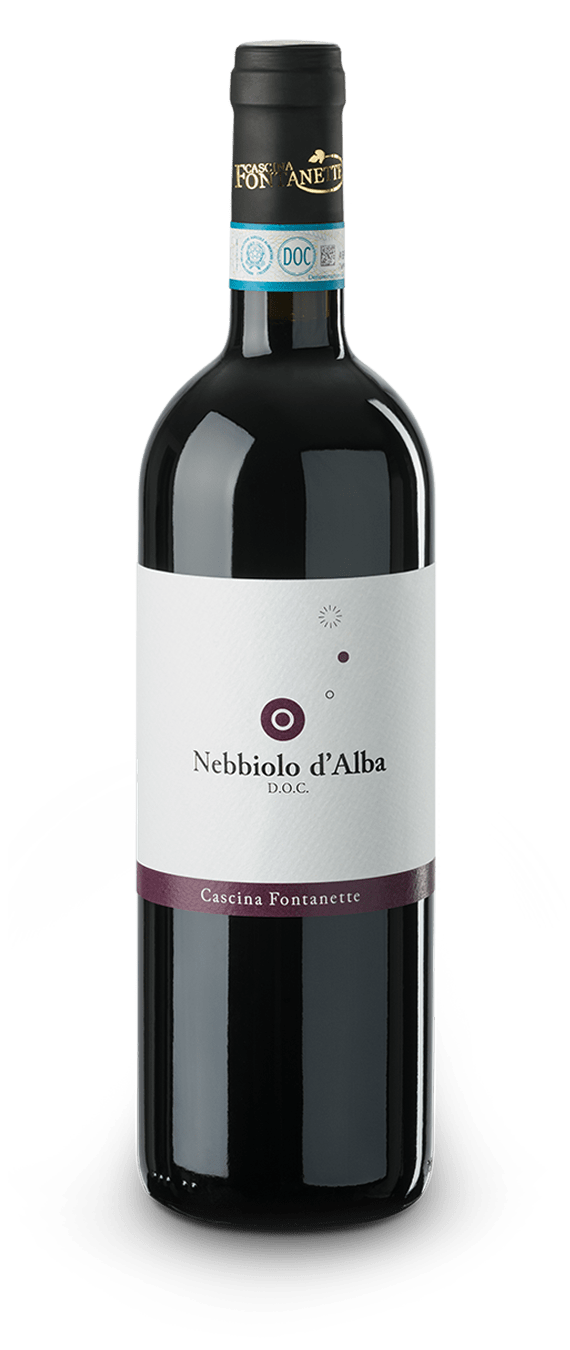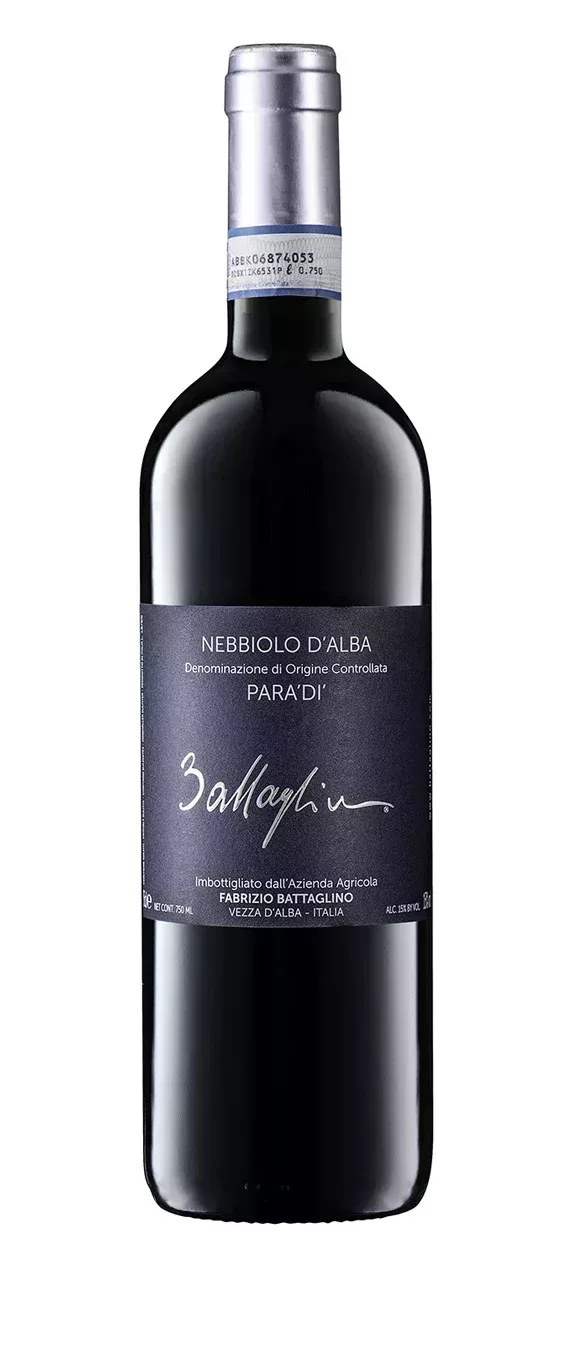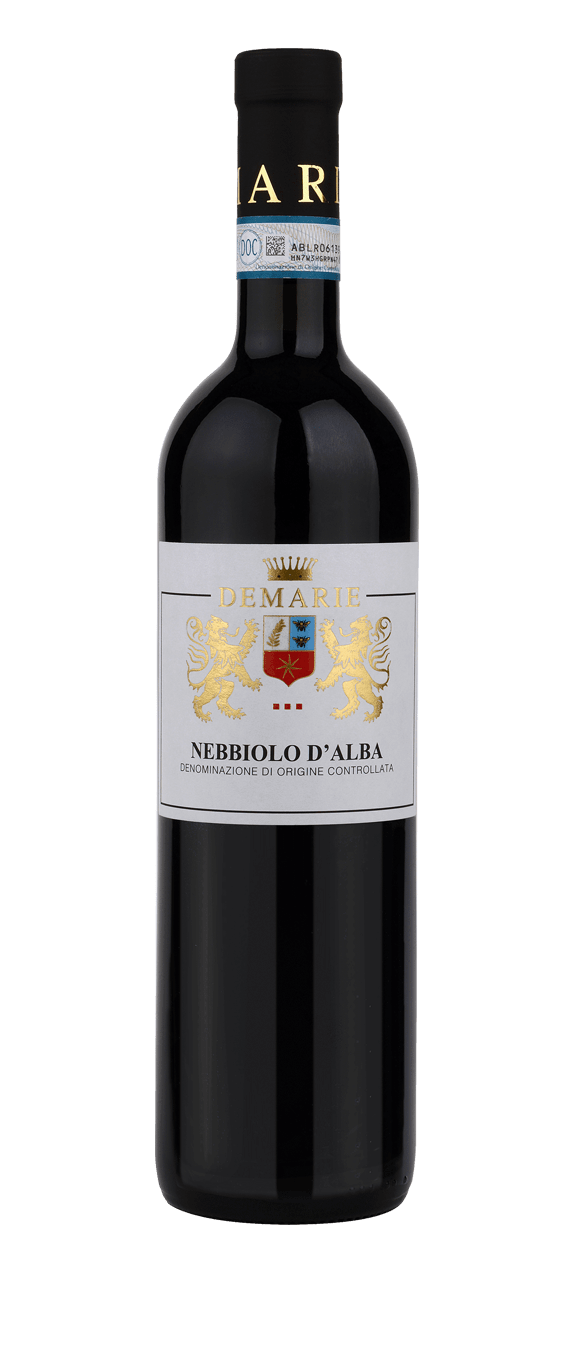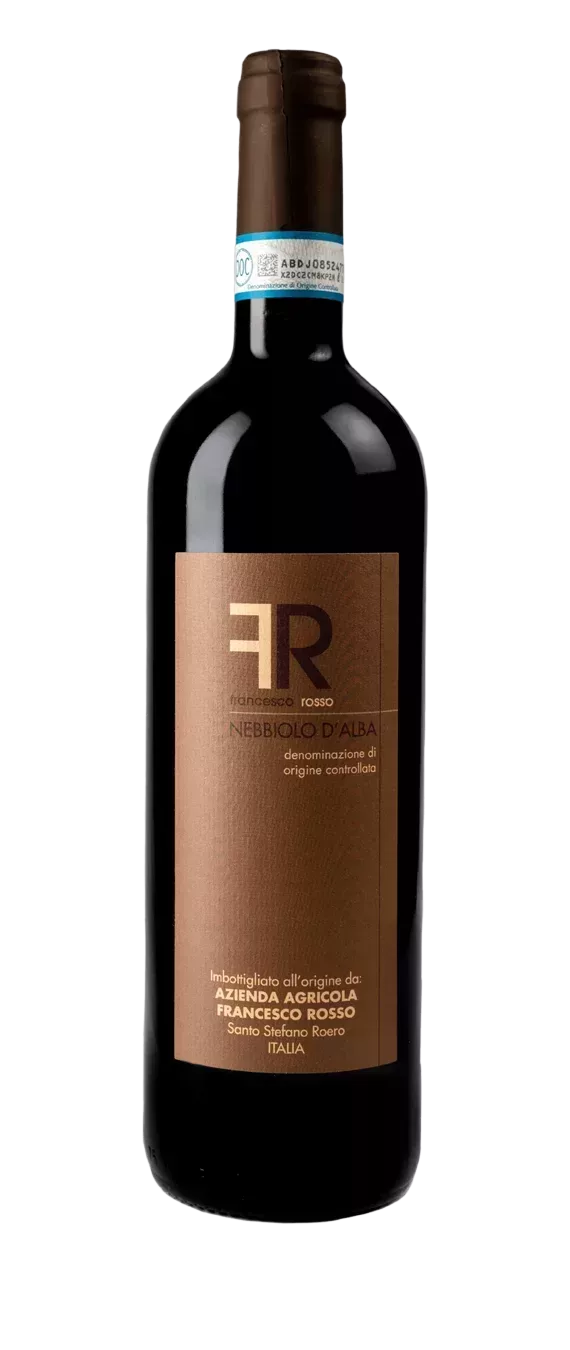
Nebbiolo d’Alba DOC
Nebbiolo d’Alba DOC is a transversal wine, capable of bringing everyone together. Without being as renowned as its older siblings (Barolo and Barbaresco) and without having the territorial extension and stylistic variety of its cousin Langhe Nebbiolo DOC, it embodies the qualitative vocation of the hills on both sides of the Tanaro river, making a proper synthesis of the elegance inherent in these lands.
In particular of the vocation of that area that revolves around the city of Alba, which is the capital of the Langhe. Nebbiolo d’Alba and its expressions (from Superiore to Spumante Rosé) manage to condense the harmony and versatility of the nebbiolo grape in an expression of structure, longevity and great drinkability.
A sip in which fruity notes and ethereal hints stand out, with that touch of spices that make nebbiolo grapes the undisputed queen of Piedmont’s native varieties.
Vines
Appellation
Color
Type
Min. alcohol
Variants
Established on

Da notare la

The history of Nebbiolo d’Alba DOC
Nebbiolo d'Alba has two different stories.
A grape variety, a denomination, and a city
Nebbiolo d'Alba has two different stories. The first is that of the grape variety, the namesake nebbiolo, which has ancient origins. The second, more recent and more complex, has to do with the name of the denomination.
The Grape of Cold Climates
As a grape variety, the history of Nebbiolo is lost in the "mists" of time. Or at least, it seems to have been present on the hills of northwestern Italy for as long as we have written memory. Thus already Columella, author of De re rustica (1st century AD) seems to refer to nebbiolo when he speaks of «clusters of black grapes that give wine from cold locations». Pliny, Virgil and Strabo, then, wrote extensively about the wine of Valtellina, most likely the offspring of nebbiolo grapes.
Excellent and Very Powerful
It is in the Middle Ages, however, that our wine receives its baptism. All sources speak of nebiolius or nibiol, neblorii or nebiolo, nebiolio or, again, uva nubiola. The onomastic variants suggest a common etymology in the autumn mists, the period when Nebbiolo is harvested; or they allude to the milky veil of the berries, covered by abundant bloom. Some have even wanted to find the patrician nature of the noun, from the Latin adjective nobilis. And who could blame them: between the 13th and 15th centuries, Nebbiolo was one of the most valued wines of Piedmontese viticulture, whose "wonderfully vinous nature makes excellent wine for aging and is very powerful" (Pietro De Crescenzi, Treatise on Agriculture, 1304).
The "Alba" Denomination
While the history of the grape variety is common to all wines born from this extraordinary cultivar (Barolo, Barbaresco, Roero, and Langhe Nebbiolo, to name a few), that of the denomination is a story of boundaries and sentiments.
Officially, the Denomination of Controlled Origin Nebbiolo d'Alba was approved on May 27, 1970. The legislator's intent was to enhance and distinguish the production of Nebbiolo wine from a vast territory around the city of Alba, hence the name.
It was undeniable that the hills of the Alba area expressed a genius loci different from all others, especially in the vinification of nebbiolo. With the passing of years and the mature awareness of nebbiolo's potential, however, some producers in Roero began to feel that the DOC Nebbiolo d'Alba was not sufficient to define the personality of their wines. In 1985 this dissatisfaction led to the creation of a new denomination, Roero DOC (then DOCG from 2004): the name "Alba" was lost, which today is synonymous with "excellence", but independence and identity were gained, while at the same time leading to a high fragmentation of the offering.
Accelerating Quality
Today, the production of Nebbiolo d'Alba is limited to 25 municipalities around the eponymous town, on both sides of the Tanaro river. It is a smaller denomination than it once was, but no less prestigious. It boasts a catchy epithet, a series of renowned producers, and a niche cult that holds in high regard the approximately 3 million bottles produced each year (compared to nearly 10 million of Langhe Nebbiolo). Also, because those who produce Nebbiolo d'Alba (remember: pure Nebbiolo) often do not own vineyards in Barolo and Barbaresco (otherwise they would produce the latter). Thus, they push the accelerator on quality, creating wines of elegance and structure capable of rivaling the "kings" of the Langhe, especially in price.
Nebbiolo d’Alba DOC: Terroir
Nebbiolo d'Alba is born from unique soils of clay and limestone shaped by the Tanaro, which give the wines elegance, refined aromas and an unmistakable structure.
The Nebbiolo d’Alba DOC is born from grapes cultivated in a fascinating and complex territory, extending over 25 municipalities along both banks of the Tanaro river. An area that is not only geographically vast but also geologically extraordinary.
Everything originates from an event that occurred about 150,000 years ago, when the Tanaro changed course in a phenomenon now known as the “capture of the Tanaro”. From that moment nature sculpted a unique landscape, creating the famous Rocche: spectacular escarpments and stratified terrains where clay and limestone alternate like pages of a long geological history.
This combination of soils gives the wines a character all their own: the sands contribute to the fineness of aromas and an elegant structure, while the limestone, and to a lesser extent clay, offer solidity and longevity.
Cultivation follows traditional practices, respectful of the environment and the natural rhythm of the vine. The Nebbiolo d’Alba grows exclusively on the best-exposed hillside slopes, where the sun accompanies the ripening of the grapes and the vines are protected from spring frosts and cold winds.
The ideal terrains are those of the Miocene-Helvetian horizon, rich in white clayey marls, or a skillful mix of these elements. Valley floors and humid areas are banned instead, where light and heat are not enough to express the true soul of this noble grape variety.
The result? A wine that brings all the charm of its territory into the glass: the history of an ancient land, shaped by water and time, and the unmistakable personality of Nebbiolo, which finds one of its most elegant interpretations here.
Preferred Altitude
Preferred Soil
Crus / MGA
Towns where it's produced
Nebbiolo d’Alba DOC: Vines
The Nebbiolo d’Alba DOC is a single varietal wine, and therefore can be made exclusively by Nebbiolo grapes
Piedmont’s noblest red grape needs to grow in a carefully chosen environment and growing conditions. It sprouts early and the fruit generally ripens in mid October. The bunch is medium to large, a winged pyramid shape with medium to small grapes having a consistent blue-black skin with violet nuances. This is the vine that produces Barolo and Barbaresco, Nebbiolo d’Alba... you can read more about Nebbiolo here.

Nebbiolo d’Alba DOC: Features
Elegance, sobriety, and stunning aromas: a great expression of one of Piedmont's symbolic grape varieties.
The Nebbiolo d'Alba DOC is the most authentic expression of a noble and long-lived grape variety, capable of renewing itself over time without ever losing its identity. It is a red wine that speaks with elegance but with character: every sip tells the strength of the hills and the wisdom of those who cultivate them.
Made from 100% Nebbiolo grapes, this wine embodies the refinement of the grape variety in all its nuances, up to surprising interpretations like Spumante and Spumante Rosé.
Once austere and tannic, today Nebbiolo d'Alba can also appear more fruity, fresh, and accessible, while maintaining its elegant and deep soul intact.
Sight
It shines with an intense ruby red that, over time, is enriched with garnet reflections.
An evolution that reveals its vocation for aging and the complexity of the grape variety.
Nose
The aroma is broad and complex: raspberry, geranium, and wild strawberry intertwine with spicy notes of cinnamon and vanilla.
With oxygenation, ethereal nuances also emerge, amplifying its elegance.
Taste
On the palate, it is dry, velvety, and harmonious. The balance between alcohol, acidity, and extract creates a composition of great finesse, supported by elegant tannins and a structure capable of evolving over time.
Official regulation
Color
Perfume
Taste
Foam
Get a bottle directly from the producer
LoveLanghe Shop is a niche of great wines from the Langhe area: some unknown to most, some already quite recognized but perhaps hard to find in the big distribution, others in which we see potential but that have yet to grow.
Bottles are shipped directly from the winery to your home, with no intermediary.
Service
Serve it at a temperature of 18-20°C to fully enhance its complexity and smoothness.
Nebbiolo d’Alba DOC: what to pair it with
Nebbiolo d'Alba loves traditional cuisine and rich flavors. It naturally accompanies tajarin, lasagna, stuffed pasta with ragù or risottos with mushrooms and truffle. It excels with red meats: roasts, braised meats, game, or the classic bollito misto. Also excellent with medium-aged cheeses, like Testun, or at the end of a meal, with a plate of chestnuts.
Recipes to pair with Nebbiolo d’Alba DOC
Nebbiolo d’Alba DOC: Production
From harvest to bottle, every gesture is a quest for balance between strength and smoothness.
The production of Nebbiolo d’Alba DOC is in the hands of producers who have known the secrets of this grape variety for generations, and who know how to enhance the elegance and finesse of the Nebbiolo grapes cultivated on these hills.
Each winery has its own interpretation, but they all share the same vision: to obtain a noble, harmonious wine capable of surprising with the perfect balance between tannin and silkiness.
The harvest, strictly manual, takes place between late September and October, when the clusters have reached ideal ripeness. It is followed by a gentle pressing, which preserves the integrity of the aromas, and an alcoholic fermentation at controlled temperature, accompanied by punching down and remontage that allow for the slow extraction of color and aromas.
Once fermentation is complete, the wine undergoes malolactic fermentation, which softens its profile and completes its evolution.
The aging varies according to each producer’s style: it can take place in cement tanks, in large oak barrels, or in used tonneaux, followed by an additional period in the bottle, where the wine reaches its full harmony.
The result is a Nebbiolo d’Alba DOC that speaks the language of tradition but with a contemporary accent: elegant, deep, and always faithful to its land.
Time in wood
Time in bottle
Time to market
Grapes Yield
Meet the producers
Curiosities
Having come this far, a spontaneous question arises: what are the differences between Nebbiolo d’Alba and Langhe Nebbiolo?
Let’s clear up any doubts and answer frankly: almost none anymore.
Until recently, Nebbiolo d’Alba could, rightfully, “baroleggiare“, or base its uniqueness on structure and power. While Langhe Nebbiolo prided itself on freshness and finesse.
Today, upon careful tasting, the categories have hybridized: there are very fresh Nebbiolo d’Alba and austere Langhe Nebbiolo.
The real difference remains in the regulations, much stricter for the single-varietal Nebbiolo d’Alba.
Langhe Nebbiolo allows for surprising flexibility, permitting the use of up to 15% of other authorized red grape varieties, while Nebbiolo d’Alba pursues purity.
Both are young Nebbiolos, which do not have the aging of Barolo and Barbaresco. But, we can assure you, in their more evolved forms, they can easily rival these.





















































































